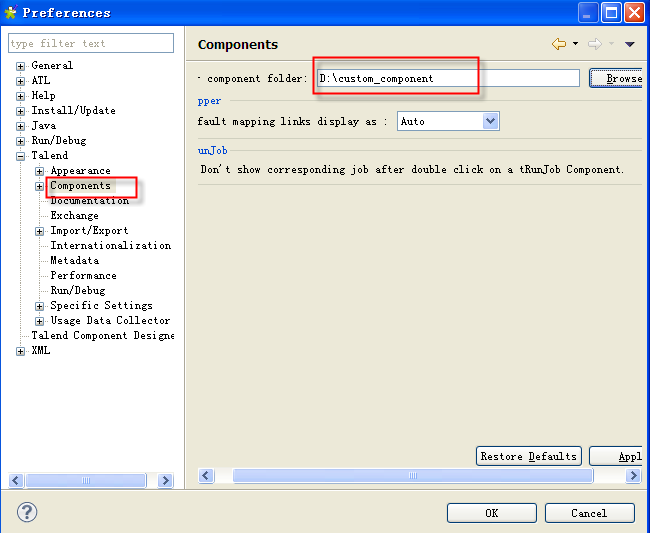Installing a custom component
This example installs a custom component called
tFileOutputPDF. You can also create your own component and
import it into your Talend Studio.
Before you begin
Before installing the custom component tFileOutputPDF, you need to download it. For more information about tFileOutputPDF, see Talend Exchange EOL and Custom Components.
After you have downloaded the component or exported your own component as a ZIP file, you can install it into your Talend Studio by taking the following steps.
Information noteNote: To install a mediation component, you need to edit
<component>_java.xml in the component ZIP file by adding
TYPE="CAMEL" to HEADER before proceeding with
the following steps. For example,
<HEADER
PLATEFORM="ALL" SERIAL=""
VERSION="0.102" STATUS="ALPHA"
COMPATIBILITY="ALL" AUTHOR="Talend" RELEASE_DATE="20100401A" STARTABLE="false" SCHEMA_AUTO_PROPAGATE="false" DATA_AUTO_PROPAGATE="false" TYPE="CAMEL" > 
